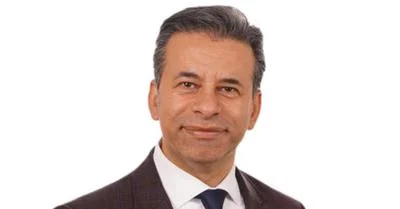The Congressional Record is a unique source of public documentation. It started in 1873, documenting nearly all the major and minor policies being discussed and debated.
“THE 20TH ANNIVERSARY OF THE TRANS-ALASKA PIPELINE” mentioning the U.S. Dept. of Energy was published in the Senate section on pages S6037-S6038 on June 20, 1997.
The publication is reproduced in full below:
THE 20TH ANNIVERSARY OF THE TRANS-ALASKA PIPELINE
Mr. MURKOWSKI. Mr. President, I advise my colleagues that 20 years ago today, a truly historic event occurred in my State of Alaska that had much to do with the shaping of the character of our State probably as much as the majestic and unique parts of our State, whether it be in the mountains or glaciers.
On June 20, 1977, at 10:06 a.m. at Prudhoe Bay, AK, the crude oil discovered on the North Slope 9 years earlier began to flow. It began its journey south some 800 miles to the ice-free port of Valdez through the Trans-Alaska pipeline. That first trip, which now takes about 5 days for the oil to move, took over 1 month to complete and marked the culmination of the largest private construction project ever undertaken in the history of North America.
Since that time, every citizen has benefited from this marvel of American engineering, but few really understand how significant this feat was and how much it has contributed to our Nation. The pipeline took 3 years of construction.
The total cost was about $8 billion. The initial estimate was just under $1 billion. However, in today's dollars, that would equate to about $22 to $25 billion. It was truly a marvel, one of the engineering wonders of the world. It took 2,215 State and Federal permits to proceed. Today, it is estimated to take over 5,000. Approximately 70,000 people were used as a work force; over 3 million tons of materials were shipped to Alaska for construction; 73 million cubic yards of gravel were used; 13 bridges, ranging from 177 feet to 2,295 feet had to be constructed going across the Yukon River; 834 rivers were crossed; three mountain ranges as well.
Since that time, Mr. President, that pipeline has been subject to earthquakes, it has been subject to bombing, dynamite has been wrapped around it, it has been shot at so many times too numerous to count--but it has withstood those rigors of Mother Nature as well as mankind.
While there was a terrible accident associated with the grounding of the Exxon Valdez, which was of course due to negligence on behalf of those who were operating that vessel, the Prince William Sound is cleaned up today, and it is continuing its contributions as one of the most productive bodies of water on Earth. From the standpoint of the renewability of the fisheries and marine resources of the area--I do not mean to belittle the significance of that tragedy--but Mother Nature has a way of cleansing, and it was helped by a good deal of funding, commitment and expertise from Alaskans and those outside. But the fact remains, this pipeline continues to contribute a great deal to the economy of this country.
Certainly much of the permitting process, and to a large degree the continuity of maintaining quality and environmental concerns, are a responsibility of the Federal Government as well as the State government which watched over the construction and the operation and made sure it was done responsibly. But those groups did not stand in the way of construction.
Since the pipeline first flowed on June 20, 1977, the pipeline has produced and provided the United States with over 25 percent of the domestic crude oil produced in the United States and about 10 percent of total U.S. daily consumption of crude oil, to give you some idea of the significance of this particular and unique all-American pipeline.
So, as a consequence, as we look at our situation today, this pipeline has contributed significantly to U.S. energy independence and, I might add, energy independence that is in serious jeopardy.
Consider this for just a moment, Mr. President. In 1994, domestic flow production dropped to 6.6 million barrels a day, the lowest since 1954. National demand has increased to more than 17.7 million barrels per day, the highest level since the mid-1970's. The United States imported 51 percent of its oil in 1994. Today, we are importing a little over 52 percent, but according to the Department of Energy, U.S. dependence on foreign oil is expected to rise to nearly 70 percent by the year 2000.
If not for the trans-Alaska pipeline, we might have already reached 70 percent imported oil. How much higher would our gasoline prices be without that pipeline? How much more likely would we be putting our children and grandchildren in harm's way on foreign soil to protect our domestic interests if we were importing more than 70 percent of our oil? Because, make no mistake about it, Mr. President, the Persian Gulf conflict was about keeping the flow of oil for the benefit of the world.
We have always had an environmental concern over the pipeline. It was predicted that this pipeline, going through permafrost, which is frozen ground, and being a hot pipeline carrying warm oil, would cause heat generation and melt the permafrost, and, therefore, the pipeline would continually go further and further down, to fulfill perhaps a self-
propelling prophecy that was suggested it would end up in China some day. Didn't we always know as kids, if you went down far enough, you would end up in China? Well, clearly that has not happened, Mr. President.
The pipeline operates in permafrost. The hot oil flows through the pipeline, but the pipeline was clearly engineered to withstand that. It was suggested that this pipeline across 800 miles of Alaska would cause the animals, the wildlife associated with it, be it the polar bear, the grizzly bear, the brown bear, the black bear, the caribou, or the moose, to somehow have a fence they could not cross. The facts are, at the pipeline and the buried sections, the animals browse on it in the early spring because the small amount of heat generated causes the grasses to come up first, and it has become a sight and attraction. We see the caribou in their migration standing on top of the buried pipeline because there is more wind there and there are less opportunities for mosquitoes. So to suggest that it has somehow restricted the natural flow of wildlife certainly has not occurred.
One can bottom line it and simply say the predictions of the environmental groups who said this was going to be some kind of environmental disaster have not occurred. It has been successful. It has done its job, and continues.
To suggest it has not had its share of problems or there have not been mechanical failures and there have not been human failures--of course there have. I have always supported stringent oversight of the pipeline. We have been working with the Joint Pipeline Office and the Department of Transportation, and the effort has been successful.
But every now and then we find opponents of development in Alaska who are looking for a cause, the cause of membership or cause of dollars or perhaps they bring up some of the young attorneys from Harvard or Brown to do missionary work in Alaska by representing one or another of the environmental groups. I think we have some 62 in Anchorage now.
They need a cause. And one of their favorite topics, when things are slow, is to come out with a report that somehow the pipeline is in peril, somehow the pipeline is not being operated in the most efficient manner from the standpoint of the public interest.
First of all, Mr. President, those who own the pipeline, the major owners--ARCO, Exxon--produce petroleum. Their interest is moving oil, moving oil safely, moving oil economically. To do anything less than that would be detrimental to their own interest.
The State of Alaska maintains an oversight, the Federal Government maintains an oversight. But nevertheless, we continually see reports that purposely mislead the public about the Trans-Alaska pipeline.
Those of us in the Senate know that if you do not have your electric code book up to date--and there are 25,000 or 30,000 separate entries--
you can be classified by an agency as having 25,000 or 30,000 violations. It does not mean that your code book has not been updated during the last year for any number of reasons.
So we have had critics of the pipeline from time to time issuing reports intended to portray some of these problems as standard operating procedure for pipeline management rather than an exception. Of course, it generates for those particular organizations contributions and in some cases generates membership. But these claims are in stark contrast to recent oversight reports by responsible State and Federal agencies tasked with the oversight responsibility.
In 1995, the U.S. Department of Transportation audited the Office of Pipeline Safety to determine its effectiveness in ensuring the Trans-
Alaska pipeline operations minimize risk to life and property. The audit concluded the operation ``is effectively monitoring and inspecting [the pipeline]. Also, when violations were identified, OPS took enforcement actions against Alyeska'' and made corrections.
In August of 1995, at the request of Congress, the GAO completed an audit of the pipeline operators and their response to identified deficiencies. The report concluded that ``Alyeska has taken substantive actions that, if carried through to completion, appear to be adequate to correct the problems.''
Last year, the Joint Pipeline Office concluded that Alyeska has implemented its revised quality control for the pipeline sufficiently to allow its full approval.
So, Mr. President, these are the responsible agencies and current reports we have on hand. We have no reason to doubt their accuracy.
Finally, Mr. President, Alaska truly is a great State, a great big piece of real estate. We have many great assets, including our people and the resources that we have. On this date, I would like to especially recognize the role the Trans-Alaska pipeline has had in shaping our State and the benefits it has provided to this Nation's energy and natural security interests.
Finally, Mr. President, on July 18-20, I am going to be leading a number of our colleagues to Alaska to look at the issues related to resource development of Alaska's Arctic, specifically the Trans-Alaska pipeline and other areas where truly the wealth of North America is coming from the Arctic.
I remind the Presiding Officer that Alaska just happens to be the only State with any Arctic in it. So as part of that trip, we will take a close look at the marvels of the Trans-Alaska pipeline, what it has meant to this Nation. I look forward to leading this group, and I encourage my colleagues to join with me on this important trip.
Finally, in conclusion, on the 20th anniversary of the Trans-Alaska pipeline, I would like to congratulate those workers who operate and have operated this pipeline for the last 20 years against tremendous odds, extraordinary climactic conditions, and have done it in a manner of recognizing that American technology and ingenuity and can-do spirit can just about overcome any adversity and any particular challenge of the time.
The successful operation of the Trans-Alaska pipeline for the last 20 years, I think, has proven that indeed the men and women who are associated with the pipeline and the Alyeska crew are certainly up to the task.
I thank the Chair.
Mr. President, I yield the floor.
____________________








